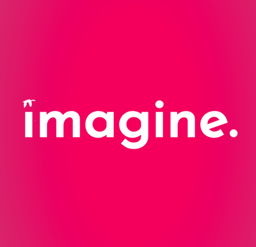The culture fit interview: Do's & dont's
A conversation with Fabian. He’s led more than 100+ culture fit interviews in European scaleups
Watch the video above or read our shortened summary below
Dive into our conversation with Fabian, co-founder at Sharpist.org and previously partner mgmt. & operations at GetYourGuide.
Johann (CEO & Founder, Imagine): Hi Fabi! My understanding is that you are the ‘master’ of cultural fit interviews. In your role, you’ve been leading many of them. How many did you do in your life so far?
Fabian: That’s a good question! I’d say more than 100 cultural fit interviews!
Johann: Wow! That’s why we’re talking to you today. Many people we work with have this one question: “what’s this ominous culture fit interview? what is it like and what do I have to do to survive it?” So shall we start with a very brief overview of the interview process and where does the cultural fit interview come in?
Meet Fabian. He’s led 100+ culture fit interviews.
Fabian: Yeah, regarding the overall process: What we did at GetYourGuide, and now at Sharpist, is to start with a few very low barrier types of interview phone screens to see if we and the candidate have the same basic understanding of the role. Once this is checked, then you want to test people’s technical skills in several interviews. These interviews are also an opportunity to get to know the different team members and the process in which the team works.
The cultural fit interview comes at the very end. Here the team will ask “do I really believe that this person will add value to our team and do we feel like we want to work with this person day in, day out?”
Johann: Awesome, let’s dive into the cultural fit interview. What do you know about the candidates when they arrive “at your doorstep” for the cultural fit interview?
Ok, all the top companies use different tools to share information about the applicant throughout the process. At the start, I would typically know the types of questions that have been asked before, the candidate’s answers, and his/her strengths and weaknesses as they are assessed by the other interviewers. In addition, I would obviously look at the CV of the person and write down a few questions that I found find noteworthy. I do not necessarily look for suspicious or bad things, just for things, you know, where there’s an unexplained gap in the CV. Not necessarily even problems, just things that are not standard. I would make a mark and just follow up to understand what happened. I am looking for some basic clear reasoning from the candidate. Not more, not less.
Johann: Thanks. Next, can you paint us a picture of a successful candidate? Like: how do people behave like who make it successfully through the culture fit interview with you?
Fabian: In a nutshell, good candidates help me develop a good understanding of the person’s motivation. That’s always very helpful. Example: When someone’s able to very clearly tell me “why I should we hire you” and the “why you are the right one for this job?”.
Tip: You come across with a clear, concise answer, and ideally even in a fun, relatable way, yeah that’s a good sign.
To achieve that I always try to put the applicant into a position where there is some degree of comfort. The spirit is one of a normal conversation rather than a formal interview. For candidates, this means:
This is not just a one-way conversation but also an opportunity to ask questions and get a feeling for me as a person and the company I represent. So: just relax (if you can, haha) and enjoy the ride.
Johann: Thank you! Can you tell us a secret and give us a typical question that you are typically asking?
Fabian: Sure. To start off, I would always ask “Can you give me a brief summary of what you’ve done before?” Here I am not looking for the summary of the bullets in the CV but rather for a coherent story as to why people moved between positions. There’s no right or wrong answer, it comes down to credibly explaining your journey.
Really good candidates show an ability to self-reflect.
Johann: Interesting, so when I hear this right: Important are self-reflection, communication clarity, establishing a good relationship, opening up, and allowing you to get a feeling for the person behind the CV. What about tech? Do you talk about technical engineering details at all?
Fabian: I will never ask in-depth (I am also not an engineer). But I sometimes ask for things that are a) related to the area of expertise of the applicant and b) where I don’t necessarily have a perfect technical understanding.
I want to know: “Is this person able to communicate technical details to a broader audience?”
For example, I would ask a backend engineer “can you explain to an elderly person on the street ‘what is object-oriented programming?’” Explaining stuff to a technical peer is one thing but then explaining it to a random person in the street is another thing.
Johann: great! As a final question, some parting advice. Can you give us one do and one don’t? Something not to do and something absolutely to do in the cultural fit interview?
Fabian: First, the screw up: Don’t try to invent things that you haven’t done. There’s a good reason why you are invited to this interview. At this stage, companies believe in you. There’s no reason why you should invent anything that you have not done.
Don’t invent any stories. It always comes out. You always act somehow weird if things are not exactly like you have experienced them. Don’t do it.
Second, the positives: Be confident about the things you’ve done. Everybody has lived a very unique life. Companies appreciate that.
Always ask questions. Not just for the sake of doing so, but once you have done your homework, try to ask questions that really help you assess whether this is a firm you want to work for.
It’s a unique opportunity you have. Take advantage of it.
Johann: Thank you all for your time and detailed advice, Fabian. All the best.
That’s it. We hope you enjoyed the read. Now it’s time for action. As always, we are rooting for you. Keep us posted.
— Your friends at Imagine
© 2018-2022 Imagine Foundation e.V. Made with 🤍 in Berlin.

